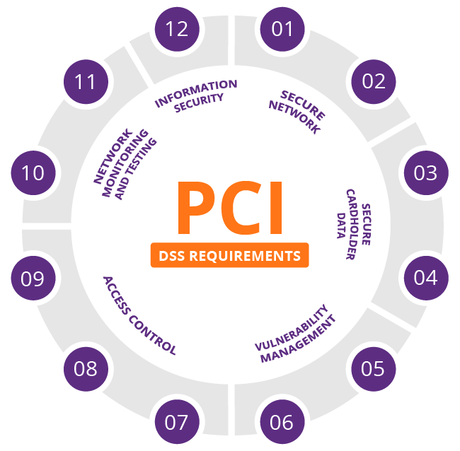An eCommerce website is not useful without a functional payment gateway. The gateway mediates the relationship between eCommerce sites and payment platforms. It is just as essential to the sites as web security. Furthermore, it is the key that authorizes secure payment for the site.
Your eCommerce site features several transactions. They need to be as safe as possible to reassure clients that nothing will compromise neither their finances nor any sensitive information they provide. Essentially, it is the most potent tool for keeping all the eCommerce-related transactions safe. The result is you create a pool of highly satisfied and happy clients.
To break it down for you, payment gateways enable you to accept payments made using credit cards. Otherwise, you would not have seamless transactions. It is comparable to any POS terminal that you might have encountered on several retail establishments. Or, are you apprehensive about using a credit card to make online purchases? You may want to read this.

Ecommerce payment gateway has several benefits too. These include:
- Guaranteeing consistently clear-cut transactions
- Reducing payment processing fraud
- Approving transactions between clients and businesses
- Encrypting and storing sensitive data
Apart from the benefits, it is worth mentioning that you can use the gateways to perform multiple functions. First, they are perfect for authorization. Do not hesitate to use them for all capture and sale types of transactions too. Ecommerce sites require refund and void transactions too, which payment gateways help with as well.
2. How does an eCommerce Payment Gateway Work?
Your eCommerce site needs a checkout feature for the payment gateway to work. It relies on a simple process though. Most importantly, the process lasts only a few seconds. The process kicks off the moment a user makes a payment. Interestingly, the process is the same whether the payment happens on the website, third party application, or ERP.
Here is how it works:
- User submits payment
- The eCommerce site passes sensitive information to the payment gateway
- The gateway tokenizes the details before transferring them to the acquiring bank of the merchant
- Process issues a "declined" or "approved" response back to the gateway
- The gateway then pushes the response back to the eCommerce platform
- Payment information is received
3. Choose Right Payment Gateway Provider
Payment gateways are different. They operate differently. Their features are equally dissimilar. For this reason, you have to understand what you need. The market has a few options worth considering. Before proceeding, though, you would need to know the different types of payment gateways that exist in the market. For the most part, these are:
- Integrated payment gateway
- Hosted payment gateway
Now that you know your options, the next step is to know how to choose the best one. Fortunately, it is not mandatory to know everything. You only have to familiarize yourself with a few crucial aspects of the gateway. The most important features to consider when selecting the suitable payment gateway for your eCommerce site include:
- The type of customer you serve
- The kind of business that you run including specifics
- Security
- Cost
- Performance and reliability
4. Various E-commerce Payment Gateway Options
As stated earlier, you can choose from a long list of viable options. Once you have determined what suits your business, the next step should be quite straightforward. Again, the industry is full of tried-and-tested options. Unless otherwise, limit yourself to these common options instead of trying to reinvent the wheel. Some of these options include:

5. Cost of Payment Gateway Integration
It is neither cheap nor simple to set up an eCommerce website. The features the site needs are equally difficult to set up. Nevertheless, you can do it all with the right financial backing. When talking about integration, you also need to consider the full list of attributes the platform depends on to function optimally. These are:
- Shipping database
- Software for managing stock inventory
- Shopping cart software
- Correspondences network
In talking about the cost of integration, one has to consider a few common methods too. The first one is hosted gateway. Direct post method is equally effective here. Non-hosted or integrated method will benefit your site. Before setting off, though, you would have to familiarize yourself with PCI DSS compliance too. Each method affects the cost of integration.
6. Custom Payment Gateway
In case you feel that the most common payment gateways are unappealing, you should consider customizing one for your eCommerce site. The customized version can work or be compatible with any option that you prefer for your website too. Furthermore, you can use it to offer your clients unlimited types of payment methods.
Creating a custom payment gateway is not an impossible task. First, you have to remember to register as a provider of payment gateway. To do this, you would need to contact one or more credit card companies. You may not enjoy much success if you get in touch with them directly. However, you have 100% chances of success if you do so through an acquiring bank.
Afterward, you would have to follow these steps:
- Contract with banks to play the role of payment processors and handle the actual process on your behalf
- API development
- PCI DSS certification
- Choose several payment methods
- Develop management tools
7. SSL/HTTPS Secured Payment Gateway

Thus far, you have only read about payment gateways for your eCommerce website. You have seen nothing regarding Wildcard SSL Certificates. What you have to remember is payment gateways will never work if you pay little attention to the role SSL/HTTPS secured payment gateway play. It is the safest way of taking payments online.
Conclusion
As shown above, you have the option of going for either payment gateway provider or custom payment gateway. Whichever choice you make, you can look forward to an eCommerce site that operates brilliantly. Your clients will have little difficulty making payments safe in the assurance that they have access to topnotch protection.
